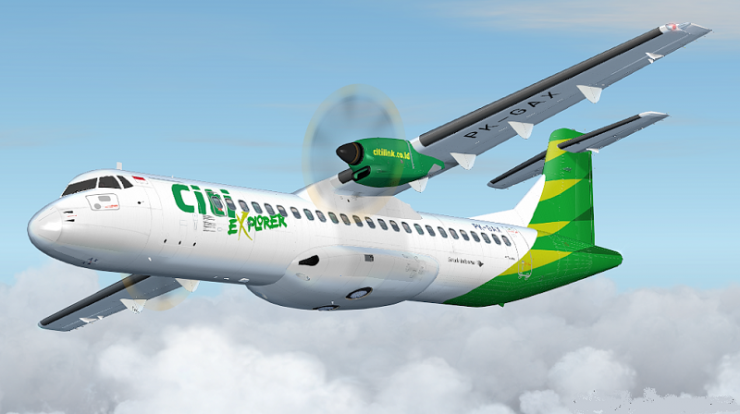CITILINK Indonesia will add up to five ATR 72-600 aircraft to optimize its domestic market share this year.
According to the President Director of Citilink, Juliandra said that currently there are 7 units of ATR 72-600 aircraft. A subsidiary of PT Garuda Indonesia Tbk. This will expand domestic flight connectivity with plans to add five ATR 72-600 aircraft by 2021.
“Citilink as a business line for low cost carriers or low cost airlines is encouraged to optimize the market share of domestic flight routes. This focus will be fully supported by an additional 5 feeders of ATR 72 600 aircraft this year,” he said Wednesday (17/2).
Juliandra also explained that as an effort to expand the flight network, especially to supporting cities and new economic areas in Indonesia, his party would open as many as 43 new routes supported by ATR 72-600 aircraft feeders covering most of them in Eastern Indonesia.
The routes consist of 26 Airbus-type aircraft routes and 17 ATR 72-600 routes, plus 10 routes which are planned to be operated again.
Based on data from the Ministry of Transportation, Citilink’s market share in domestic scheduled commercial transportation passengers in 2019-2020 is in the third position of 15.3%. Citilink is under Lion Air and Batik Air with a total of 5.42 million passengers. This market share increased in 2019 by 14.9%. Although the number of Citilink passengers in 2019 was able to be higher, as many as 11 million passengers.
As seen since March 16, 2020, with the discovery of the first COVID-19 case in Indonesia, and the government’s steps to control during the homecoming ban in May 2020 domestic flights reached their lowest point. Then, after there was relaxation in supporting the community’s economy, namely since June 8, 2020 or the so-called new habit adaptation period, the increase in passengers slowly increased.
In September 2020, the occurrence of the Large-Scale Social Restrictions (PSBB) in the DKI Jakarta area as a trigger for the implication of passenger movement decreased by 10.2% compared to the previous month. However, the movement of cargo seems to have increased compared to before the pre-COVID-19 period in accordance with the policies given to airlines to help productivity during the COVID-19 pandemic. [bisnis.com/photo special]
















